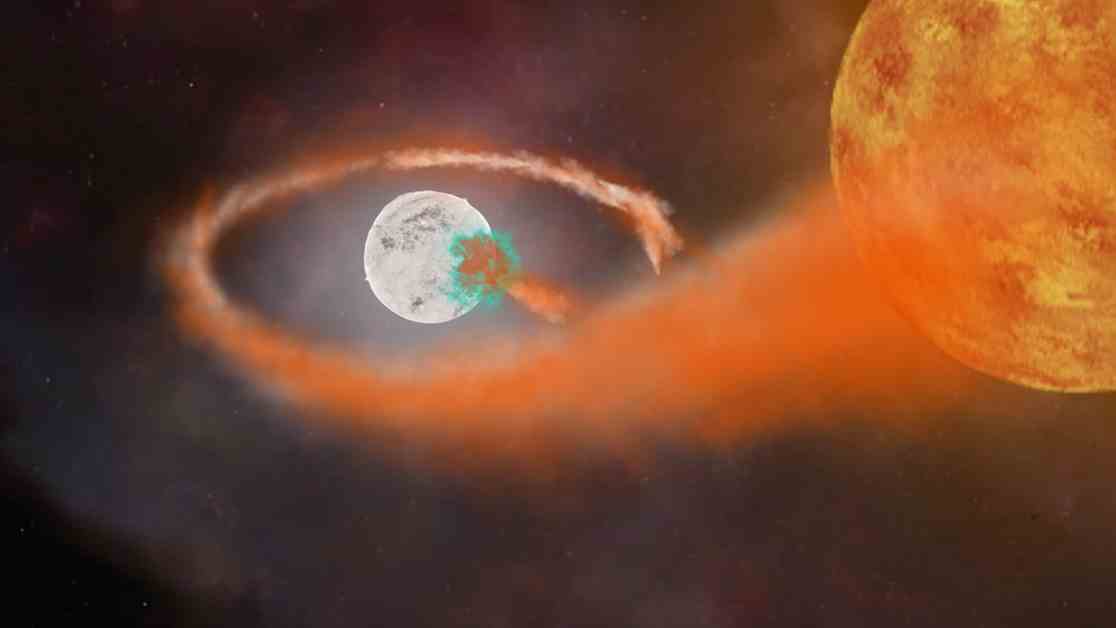Exploding ‘Vampire Stars’: AI Reveals the Mystery Behind White Dwarf Explosions
An illustration depicts a white dwarf star erupting as it consumes material from a companion star. Scientists are turning to artificial intelligence (AI) to unravel the secrets of these explosive phenomena.
White dwarf stars, known for their explosive nature in the form of Type Ia supernovas, play a crucial role in cosmic evolution by creating heavy elements that spread throughout the universe. Despite their significance, the exact reasons behind these explosions remain a mystery to astronomers.
Unlike the supernovas of massive stars, which give rise to neutron stars and black holes, Type Ia supernovas occur when a white dwarf star feeds on material stripped from a companion star. This cannibalistic behavior leads to a runaway thermonuclear explosion that destroys the white dwarf.
To better understand this process, researchers at the University of Warwick are utilizing machine learning to accelerate simulations of Type Ia supernovas. By training AI algorithms to generate models of these explosions, scientists can compare the results to real-life observations and gain valuable insights into the elements forged during these events.
This innovative approach not only speeds up the research process but also enhances the accuracy of supernova simulations. By studying the properties of these explosions and their impact on host galaxies, researchers hope to establish a direct connection between the type of explosion and the characteristics of the white dwarf involved.
Moving forward, the team aims to expand their AI-based method to study other types of supernovas, including those associated with neutron stars and black holes. By leveraging the power of machine learning, scientists are poised to unlock new discoveries in the field of supernova science.
The findings of this research were published in the Monthly Notices of the Royal Astronomical Society (MNRAS), showcasing the potential of AI in unraveling the mysteries of cosmic explosions.
For more space-related discussions and updates, join our Space Forums. If you have any news tips or comments, feel free to reach out to us at: community@space.com.
About the Author:
Robert Lea is a science journalist based in the U.K. with a background in physics and astronomy. His work has been featured in various publications, including Physics World, New Scientist, and Astronomy Magazine. Follow him on Twitter @sciencef1rst.



